What We’re Loving: Back to School 2018
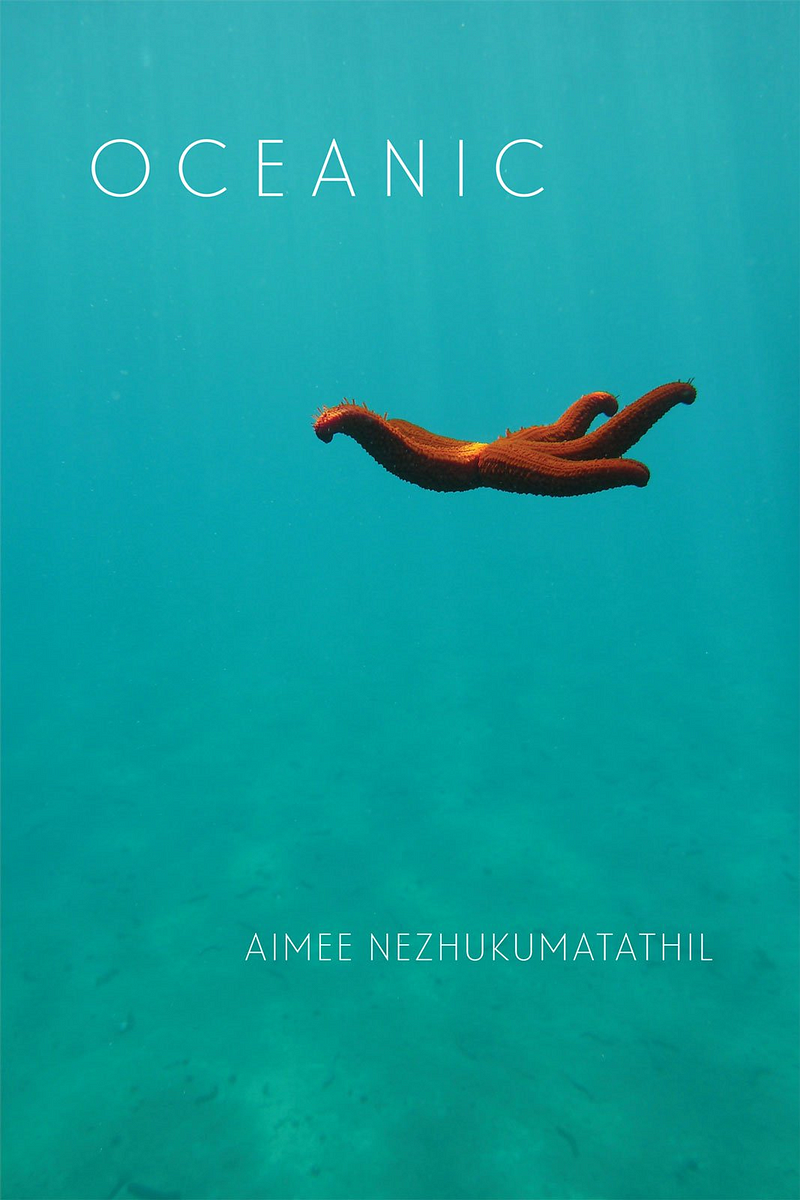
Stuck home most of the summer watching my friends’ exotic vacations on Instagram, I finally found my beach getaway in Oceanic (April 2018), the enchanting fourth collection of poetry by Aimee Nezhukumatathil. Nezhukumatathil’s book enthralls from the first page with the poem “Self-Portrait as Scallop” and the words “Let me see your shadow/feather across my hundred blue eyes.” There is a sense of youthfulness to her beginning poems. In fact, I would never have believed Oceanic to be her fourth book had I not read the back cover.
Nezhukumatathil employs aquatic imagery almost urgently, as if only these metaphors can convey the simultaneous vastness and delicacy of each topic she brings to the page, from childhood wonder to love, to heartbreak, to culture clashes, to bullying, to sexual abuse. “Two Moths,” one of my favorite poems from the collection, demonstrates her ability to treat even the grimmest subject matter with grace: “One hour. And if she cries afterward/her older sister will cover it up. Will rim/the waterline of her eyes with kohl pencil/until it looks like/two popinjay moths/have stopped to rest on her exquisite face.”
A subtle maturity floats beneath the surface of her more deceptively simple poems, such as “This Sugar,” a depiction of two people sharing dessert that hints at something darker. Towards the latter half of the book, Nezhukumatathil begins to openly address themes of marriage and motherhood; yet, no matter the topic, her voice remains playful, bordering on bizarre, curious and wise, but always careful and full of wonder.
— Shira Moolten ’21

Mitski Miyawaki’s steady rise to the status of guitar-pop icon has finally reached an undeniable new peak with Be The Cowboy (August 2018), her spectacular fifth full-length release. Our “Best American Girl” already had mastery over her area of greatest comfort, witty mumble-rock stuffed with raucous choruses, but her greatest trick on this go-around is a willingness to explore new genres and, in turn, new ways to tell her stories of alienation and identity. “Nobody” is the rare disco ballad about isolation and romantic anxiety that makes you want to dance; “Two Slow Dancers” recaptures the awkward shuffling of adolescent mating rituals; “Why Didn’t You Stop Me?” thrives in its muscular, electro-pop grooves that hark back to the very best early Wild Beasts cuts.
Despite all this successful expansion, fans of Mitski’s comme d’hab will not be disappointed. Even more so than the stellar first single and album opener, “Geyser,” Be The Cowboy’s strongest statement comes on “Remember My Name.” A combination of stellar-songwriting and truly felt lyricism, this centerpiece boasts a chorus of epic proportions: “I need something bigger than the sky/Hold it in my arms and know it’s mine.” This staggering expression of longing is only deepened by its righteous simplicity. Luckily for Mitski (and us), her ambitions are well matched by her talents, and there are enough ideas bursting through these songs that it seems more than likely that this brilliant record represents only the cusp of Mitski’s peak powers.
— Paul Schorin ’19
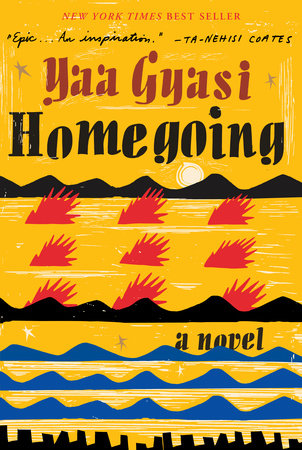
Yaa Gyasi’s debut novel, Homegoing (2016), is a brave and beautiful exploration of the transatlantic slave trade and its legacies across the African diaspora through several generations of one separated family. Perhaps the most striking image of this novel is the very depiction of this separation: one sister is upstairs on the balcony of her white husband’s estate while the other sister is in a dungeon of the same estate, held captive for the perilous journey to the United States. The reality that these two sisters could occupy such different circumstances under an insidious institution is an attempt to show the glaringly horrifying abyss of slavery and the veritable depths of lost histories and connections. While ostensibly a short story collection, Gyasi periodically traces the lives of these family members throughout major historical events in both African and Black American history to further illustrate this point. Though the ending may seem too neat and tidy for such a grand project, Gyasi reminds us of our ability to forge new identities, connections, communities, and paths amidst systematic destruction and abuse. A wonderful debut novel, indeed.
— Rasheeda Saka ’20
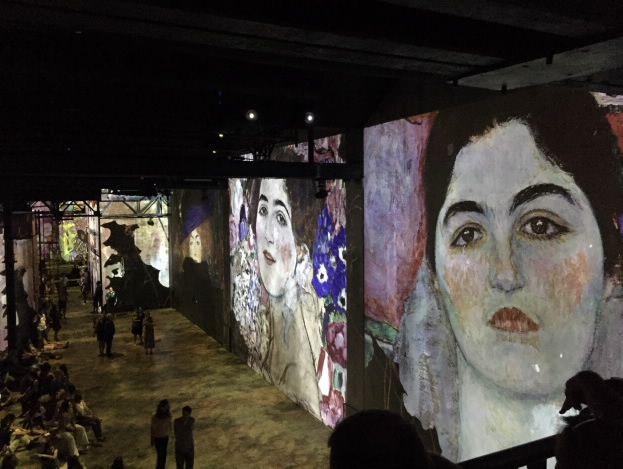
The Atelier des Lumières, nestled into a side street of Paris’ 11tharrondissement, isn’t really a museum. As we visited on a sleepy Sunday afternoon, a friend and I tried to puzzle out what to call it. An exhibition space? An art center? A Parisian hipster trap? The Atelier itself doesn’t have paintings, sculptures, or other common museum-dwellers. Rather, it bills itself as a “culturespace.”
When I saw then that they were staging a large exhibition of the works of Gustav Klimt, a Viennese symbolist painter well-known for his fantastical portraits of women, I was curious: what would it mean to have an exhibition without any actual paintings? The show, designed by a visiting team of Italian animators and composers, was built solely through animated projections of Klimt’s work set to contemporary interpretations of classical Viennese music. Painting oozed into painting and song bled into song as the brushstrokes of Klimt unfurled across the floor, ceiling, and walls of the massive gallery room.
Being surrounded 360 degrees by a painting was enchanting. I was particularly taken by the portraits of Klimt’s women: their dark hair and brows not unlike my own. I felt part of a strange sort of symbiosis. A painting is typically a two-dimensional form, but at the Atelie,r I walked around inside these women’s minds, which was the enchantment of the projections. As another towering artist, Georges Seurat, says in Stephen Sondheim’s musical Sunday in the Park with George — in painting and life “there’s only color and light…”
— Sylvie Thode ’20

As a child, I loved to read biographies, but I rarely had the attention span to finish them. As a result, I could tell you in impressive detail about the early lives of historical figures from Leonardo Da Vinci to Mao Zedong. This summer, I finally read to the end of a biography — although, admittedly, the subject of this one, John Keats, lived only to the age of twenty-five. Nonetheless, the late Walter J. Bate’s 700-page standard biography of the Romantic poet was no beach read. Still, as I confronted the fact that I will be a senior this year, and tried to come up with a plan for the direction of my own life, I found myself comforted by Bate’s patient examination of another’s life. Despite its density, this biography is eminently readable, combining clarity and lyricism in the best tradition of non-fiction prose. In exploring the theoretical implications of Keats’ defining empathy — what Keats himself called his “camelion” sensibility — Bate reveals his own empathetic capabilities and demonstrates just how important empathy should be to those of us who devote our time to literary inquiry.
— Annabel Barry ’19

In his 1964 book of poetry, 77 Dream Songs, John Berryman asks the question, “What can be the vehicle for the soul when language, with all its strictures and trappings, inevitably fails?” Berryman’s answer comes in the form of a man, a woman, a beast, a caricature, a child, a basket case, and a singular voice shouting in the void: the speaker, Henry. It is through Henry that Berryman announces his two realizations: one, that the human spirit wildly and rapidly vacillates between states of being, and two, that the English language — and all language for that matter — is incapable of fully addressing, let alone comprehending, the immaterial and dithering soul. Therein lies the heart of his work — Berryman, whose task as a poet was to express the soul through language, having discovered his duty to be impossible, chooses to be groundbreaking. Contrary to popular belief, Berryman’s genius does not lay with his eschewance of syntax or sense; rather, Berryman’s Dream Songs stand the test of time because he presents to his reader all of the grammar and English language at once.
Every poem in the work, sung in Henry’s warbling and guttural voice, contains at least one small instance of this phenomenon. Dream Song 56 sees Berryman, under the guise of Henry, don the hat of man, then deer, and finally the Devil, a declension made clear only through allusion and the sudden switching of pronouns. Henry’s singular voice is made to inhabit multiple spaces, as in Dream Song 22, “Of 1826”: “I am the little man who smokes & smokes. / I am the girl who does know better but. / I am the king of the pool. / I am so wise I had my mouth sewn shut.” Berryman, refusing to write in obeyance of linguistic rules, constructed with his Dream Songs a mythical realm in which its sole inhabitant is free to oscillate wildly and rapidly between multiple identities. On a grander level, this guiding principle to Berryman’s work is what won him the 1965 Pulitzer Prize for Poetry: Henry is not just “him” — Henry is also “it,” “they,” “she,” “us,” and “you.” In carefully weaving together multiple pronouns, contexts, definitions, puns, and so on, Berryman did what no other poet had done prior: he created an artistic expression that encapsulated the full range of humanity and unleashed the wild voice of the soul: the creature with many faces.
— Andrew Tye '21
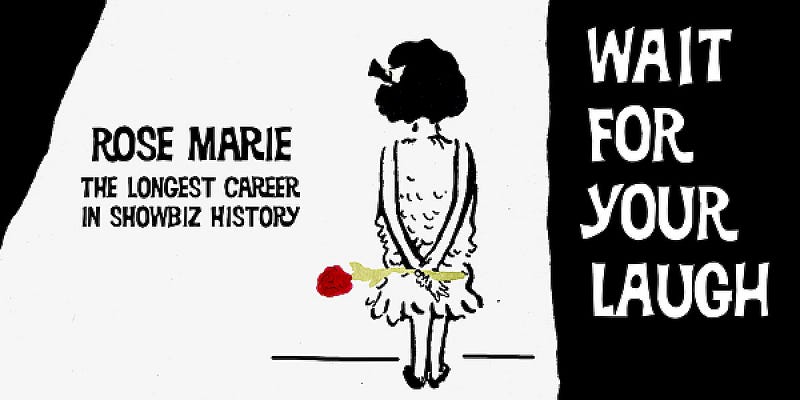
Rose Marie. She had the longest-running career in showbiz history. She performed in every major showbiz category: vaudeville, radio, television, Broadway, and film. Despite her unparalleled success, she had been a lost relic for younger audiences — until Jason Wise’s 2017 documentary Wait for Your Laugh.
Her life is less dramatic than the conventional star’s: she was married just once, never flaunted her wealth and success, and refused to play the publicity-mongering Hollywood. But her story is refreshing precisely because of its unconventionality. Rose Marie, who began performing at the age of three with the sultry voice of a chain-smoker nightclub singer, has always been unexpected. As a little girl, she charmed her way into Al Capone’s heart (she called him “Uncle Al”) and performed her way out of an urban tenement. Unlike most child stars, she went on to achieve great success in her adult life. Her singing was spectacular, but what made her unprecedented was her comedy. As an adult, she became one of the first women to do stand-up — and succeed at it. Charming and lovingly edited, the documentary highlights some of her most delightful performances, from age three to ninety-three, and splices in many interviews with her in her last months. Rose Marie died just a month after the film’s premiere in November of last year. It offers a diverting dip into the life of a performer with impeccable timing. Rose Marie knew how to wait for her laugh, and in this documentary, leaves her audience waiting for more.
— Myrial Holbrook ’19
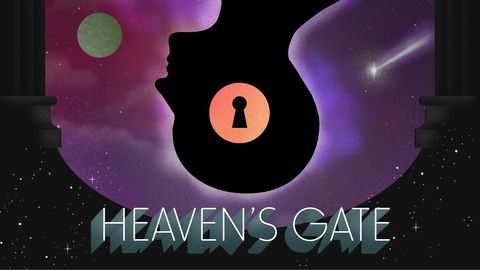
In March of 1997, thirty-nine bodies were found in a mansion outside of San Diego in an apparent mass suicide. Clad identically in black shirts and sweatpants, Nike Decades shoes, and Star Trek-inspired armbands, these were members of a mysterious cult — Heaven’s Gate.
The story of who these people were and why they did what they did is told in a podcast of the same name. Heaven’s Gate takes the listener from the origins of the group to its final moments, starting with Marshall Applewhite and Bonnie Nettles, the two founders who went by the names Do and Ti. Believing that the Earth was about to be “recycled,” they toured across the country bringing men and women into their spiritual, New Age circle. Their mission was to make it to the “Next Level,” a step beyond human that could only be achieved by shedding Earthly possessions and foregoing personal connections. To achieve this, Applewhite and Nettles’ crew camped in obscure, rural locations, cutting off ties with family and friends.
Host Glynn Washington makes all of this seem relatable, and to a degree, he makes it seem like what happened to the members of Heaven’s Gate could happen to anyone — even us. Applewhite was a former music teacher. Nettles was a former nurse. The members, who called themselves “children of the Next Level,” were smart, talented, and loving sons and daughters, mothers and fathers. In the context of rising popular belief in esoteric ideas like aliens and reincarnation, Heaven’s Gate seemed to fit right in. And despite its gruesome final act, Heaven’s Gate could be friendly and inviting. Clips of members celebrating during a holiday party and giggling at a group talent show are just glimpses of the life they built together.
The podcast Heaven’s Gate can sometimes be disturbing and chilling. Perhaps what is most disturbing, though, is how the cult’s progression from spiritual group to mass suicide seems natural, almost inevitable and, moreover, how it almost seems to make sense.
— Katie Tam ’21
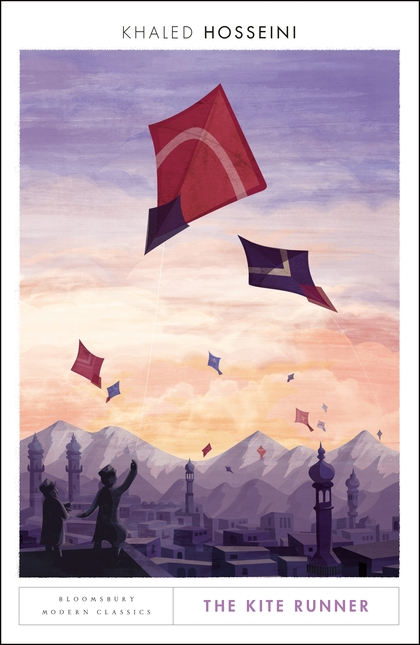
Like a kite that ascends higher into the sky, Khaled Hosseini’s 2003 novel, The Kite Runner, guides us through the life of a protagonist whose trajectory is guided by his childhood in Afghanistan. Growing up well-off, Hassan has many comforts that his friend, Amir, does not have. Despite the class differences between Hassan and Amir, they hang out together through kite fighting. It continues to be so until the political turmoil begins in Afghanistan and a rift occurs in their relationship as a result of a catalytic event in the story, which eventually leads to their estrangement from each other.
As a story that covers many themes — redemption, paternal love, bravery — it is most importantly a story about kind and devoted friendship. I constantly found myself fascinated by the characterization of Amir, the boy who continued to seek Hassan’s companionship despite the traumatic event that happens near the beginning of the story. While some may view Amir as one dimensional for his unwavering loyalty, the story speaks to limitless kindness. Indeed, Amir constantly proves his kindness again and again even when Hassan tries to remove him from his life. In one of the most moving scenes, Hassan, in attempt to get Amir to retaliate so that Hassan can feel better about his inability to help Amir, hits him with pomegranates. Yet, Amir never does. The novel harkens to a quote by Dr. Wayne Dyer: “When given the choice between being right and being kind, choose kind.” And Amir chooses exactly that.
— Alice Xu ’20
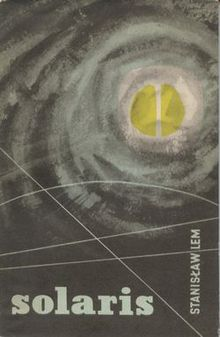
Solaris, by the Polish writer Stanislaw Lem, is a 1961 philosophical science fiction novel which chronicles scientists’ attempts to communicate with a living ocean of gel that entirely covers the titular alien planet. Thought to be a single living organism, the ocean forms fantastic structures whose function continues to elude human comprehension. When psychologist Kris Kelvin arrives at a Solaris research station, having written a thesis about the planet, he finds something has gone wrong. After ominous warnings from the researchers he meets there, Kris is confronted with an almost human replica of a long dead lover — except that she has no memory of her death and is virtually indestructible. Is this the ocean’s clumsy attempt at making first contact? Is it a threat? Maybe, as Lem seems to suggest, science will never be able to know the answer. But, where scientific methods fail, Lem’s descriptions of the ocean’s acrobatics dazzle:
“Viewed from above, the mimoid resembles a town, an illusion produced by our compulsion to superimpose analogies with what we know. When the sky is clear, a shimmering heat-haze covers the pliant structures of the clustered polyps surmounted by membranous palisades.”
— Remi Shaull-Thompson ’19